Lalibela: to see it all in three hours
Only in the bus to Lalibela, we took the decision to take a tour to the Danakil depression which would last at least three days. Therefore, in Lalibela we had left… only half a day. Considering that the main sight, the rock-hewn churches, are open from 8 am to 6 pm, we had only three hours to visit them all.
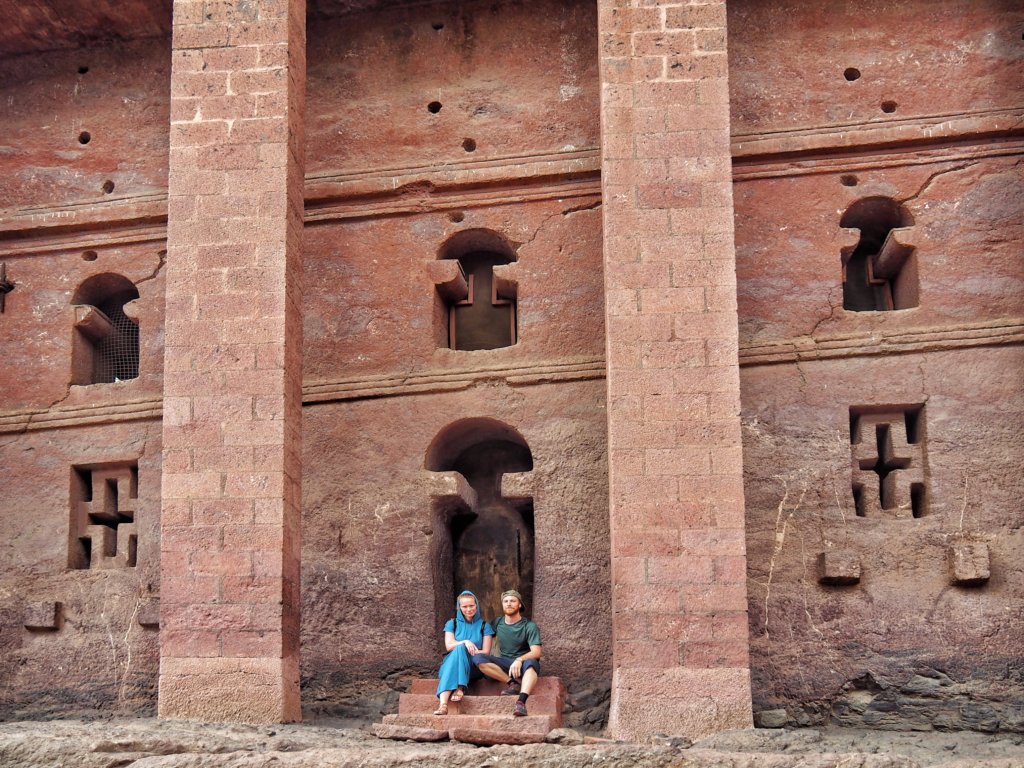
At the beginning, we didn’t want to have a guide, but considering the time limits and sometimes sophisticated ways and hidden shortcuts between the churches, we decided in favor of a local guide. Our guide’s name was Taye Abeba. He knew the area very well and during a little bit more than two hours he managed to show us almost all churches from all three groups. He also speaks fairly good English (it takes only several minutes to get used to the pronunciation) and was able to find an answer to a lot of questions I was asking. For those who are planning to go to Lalibela, here is his contact: tayelalibela@gmail.com. The prices for a guide start from 15 – 20 US Dollars for a day and are a subject to negotiation. The entrance price to visit the churches is 50 US Dollar for a person. This ticket is valid four days and has to be shown at almost every church.
Lalibela is one of Ethiopia’s holiest cities and a center of pilgrimage: the country has adopted Christianity in the beginning of the fourth century. The churches of Lalibela date from the seventh to thirteenth centuries. Their construction is attributed to King Lalibela who decided to build a “New Jerusalem” in the 12th century, after Muslim conquests deterred Christian pilgrimages on their way to the Holy Land. The Rock-Hewn Churches of Lalibela carry this name because they were indeed carved from the monolithic blocks of the living rock. Later, doors, windows, rooms and columns were cut in these massive constructions. Finally, these buildings were then equipped with extensive system of drainage ditches and intricate ceremonial passages (some of them under earth; we were walking for several minutes in complete darkness while exploring them). In 1978, the Rock-Hewn Churches of Lalibela were declared a UNESCO World Heritage Site. To discover more history underneath, visit the UNESCO page dedicated to Lalibela: https://whc.unesco.org/en/list/18.
Church of St. George
Probably, the most famous Lalibela Church is Biete Ghiorgis (House of St. George), the only church, which constitutes the Western Group of the churches and one of the last-to-be-built churches out of the eleven-churches-group. It is even sometimes referred as the Eighth Wonder of the World.
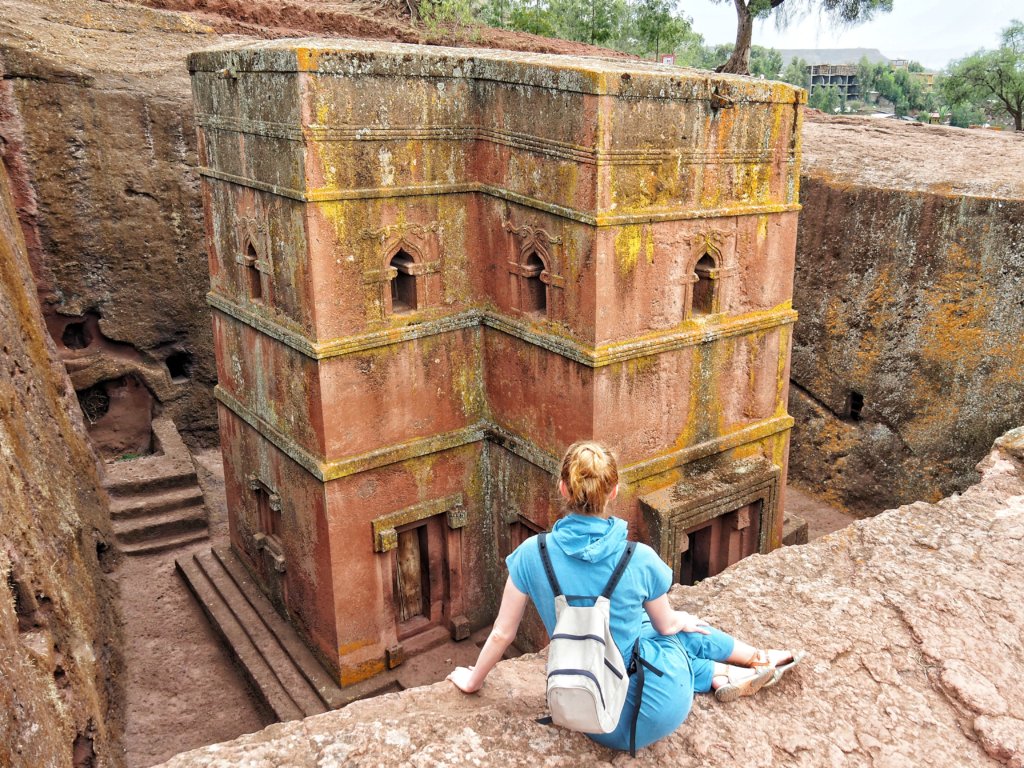
Indeed, the construction and the access to this church is very unusual. If you stand on the top, you are at the same level with the roof of the building. But if you come to the edge and look down…ufff… you realize how huge this church is and how much work it cost to build it upside down! In order to enter the church, you have to follow the tunnel, which leads you under the earth.

Lalibela: in the city
Lalibela is a small city where you can reach everything by foot. However, as we were tired after energetic walking between the churches, we rewarded ourselves with a tuk-tuk ride to the restaurant. The tuk-tuks are called bajad here. A ride within the city costs around 20-30 Birr.
For the dinner, we have chosen the restaurant Ben Abeba (http://www.benabeba.com/lalibela/Home.html). It is probably the most well known restaurant in the city – it is famous for the scenic view from its terrace as well as for quality cuisine and unusual appearance (from the distance it looks like a witch’s hat).


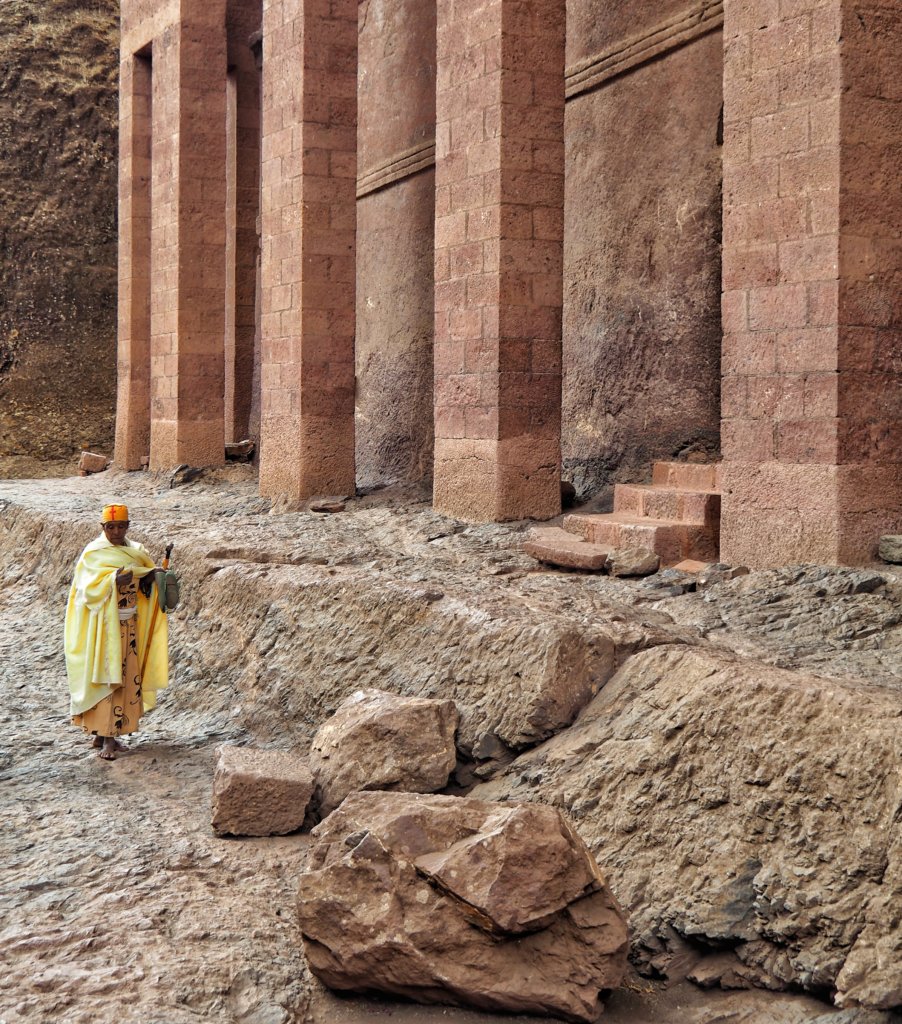
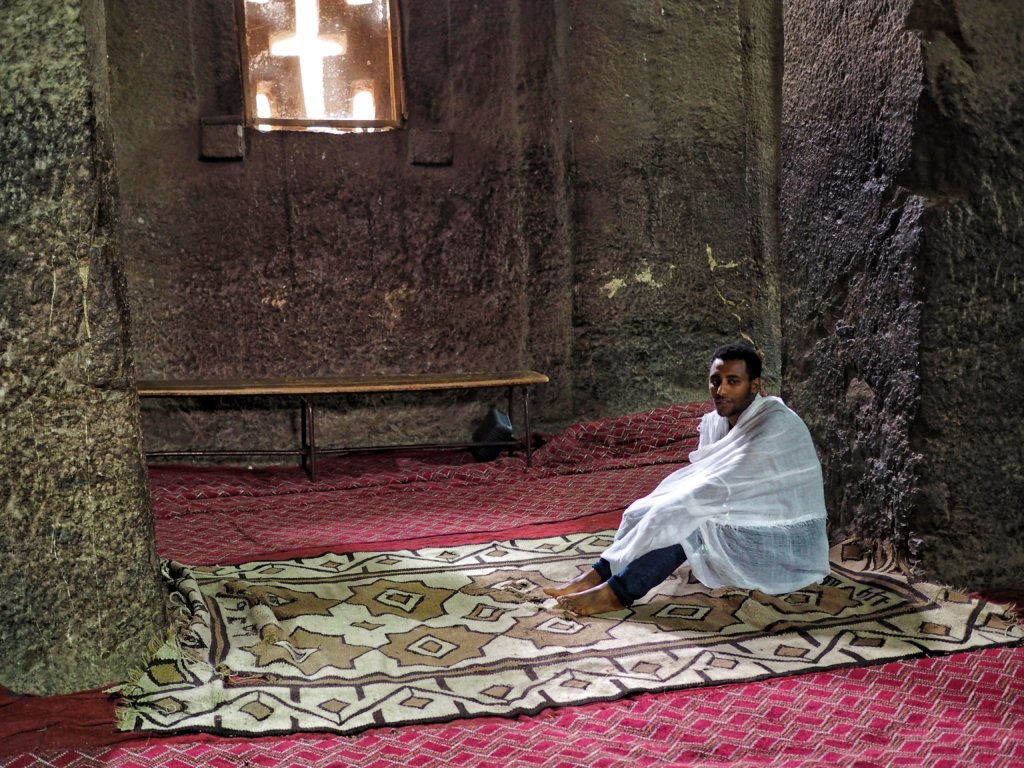


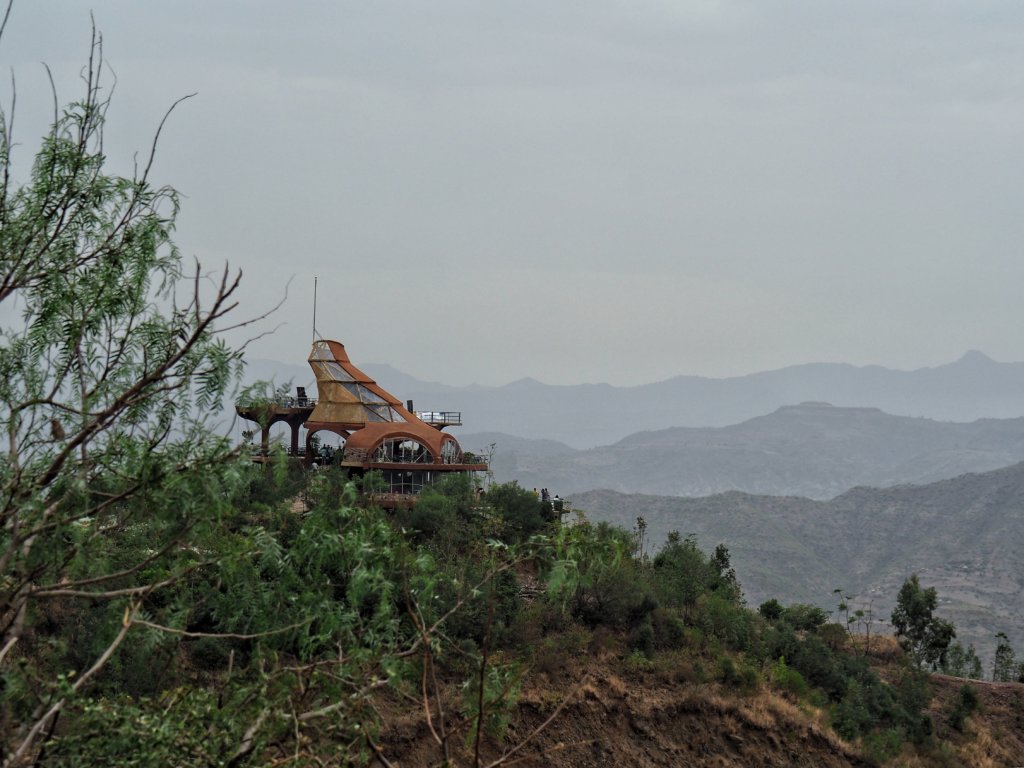
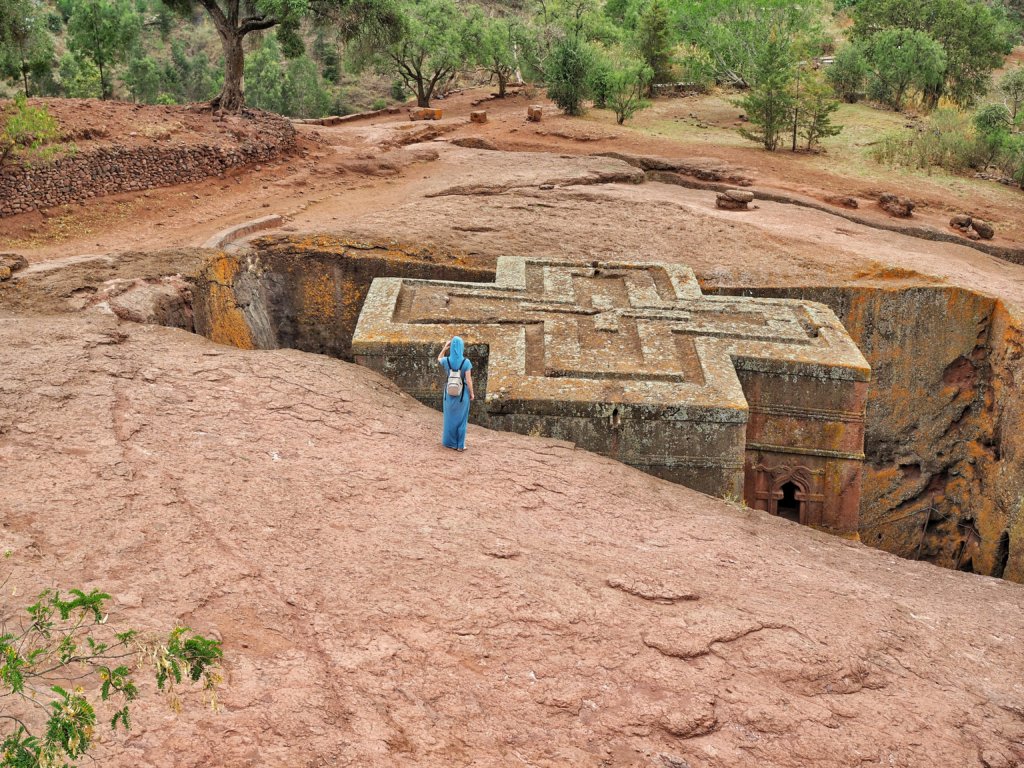

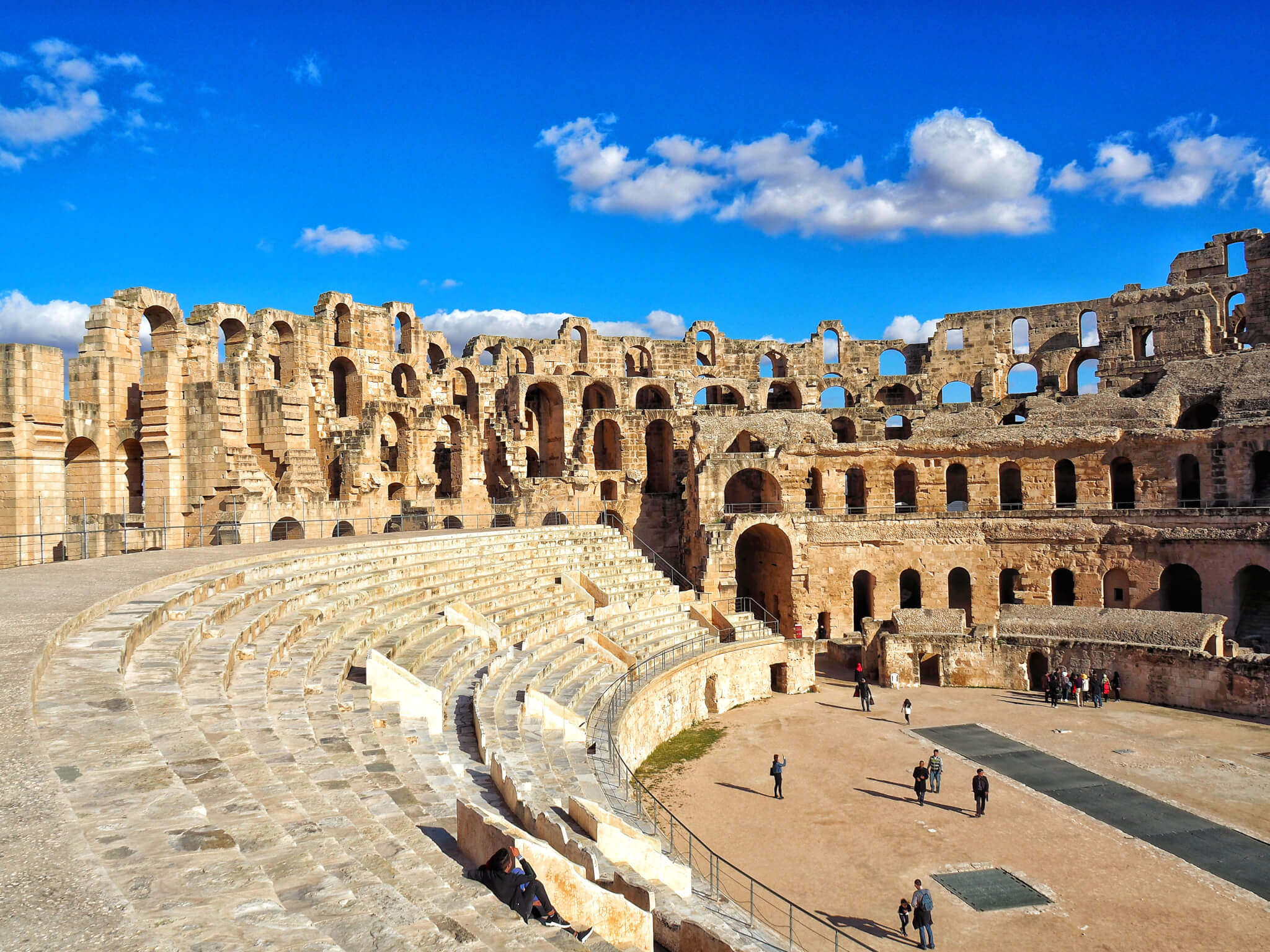
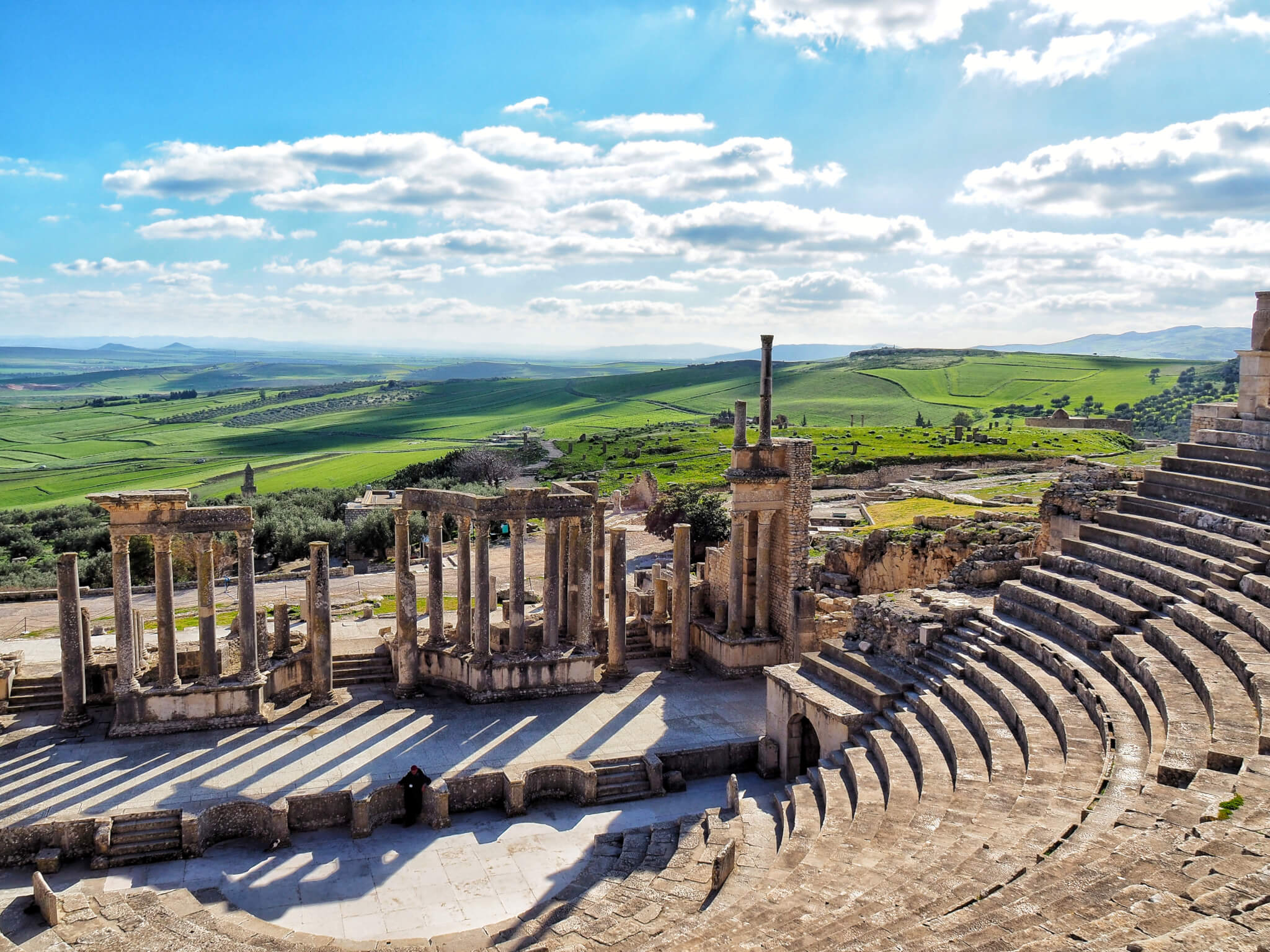
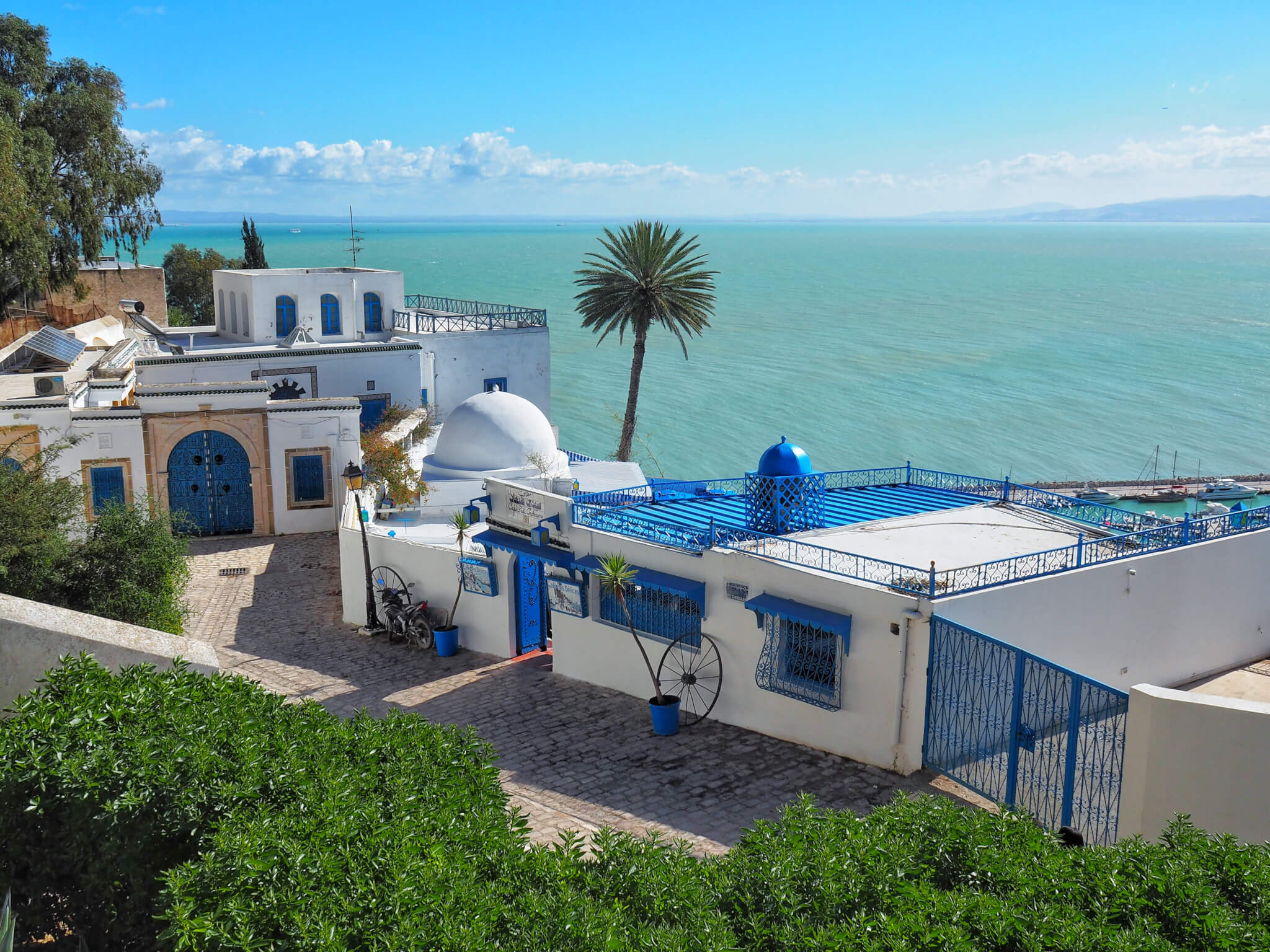


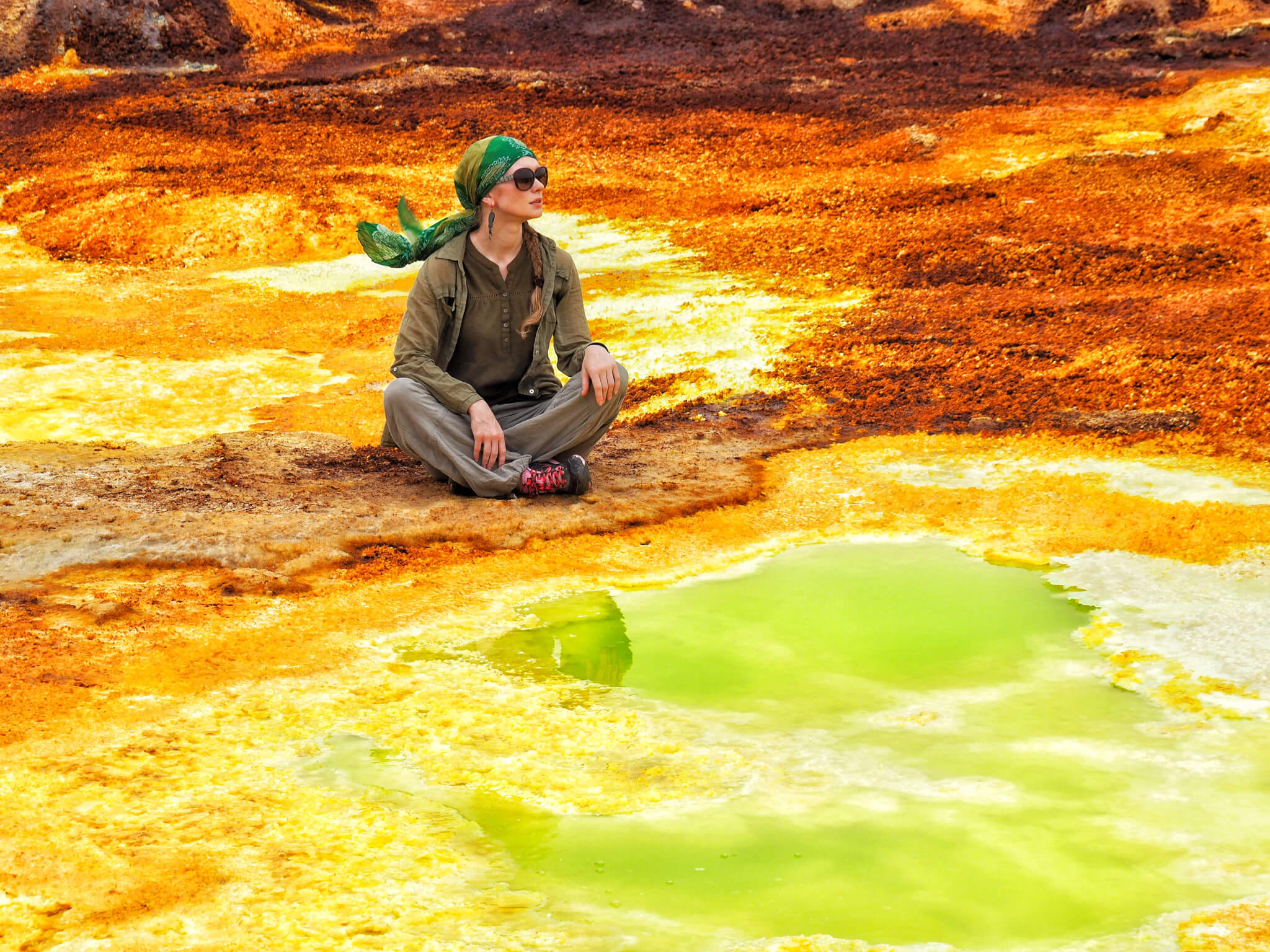

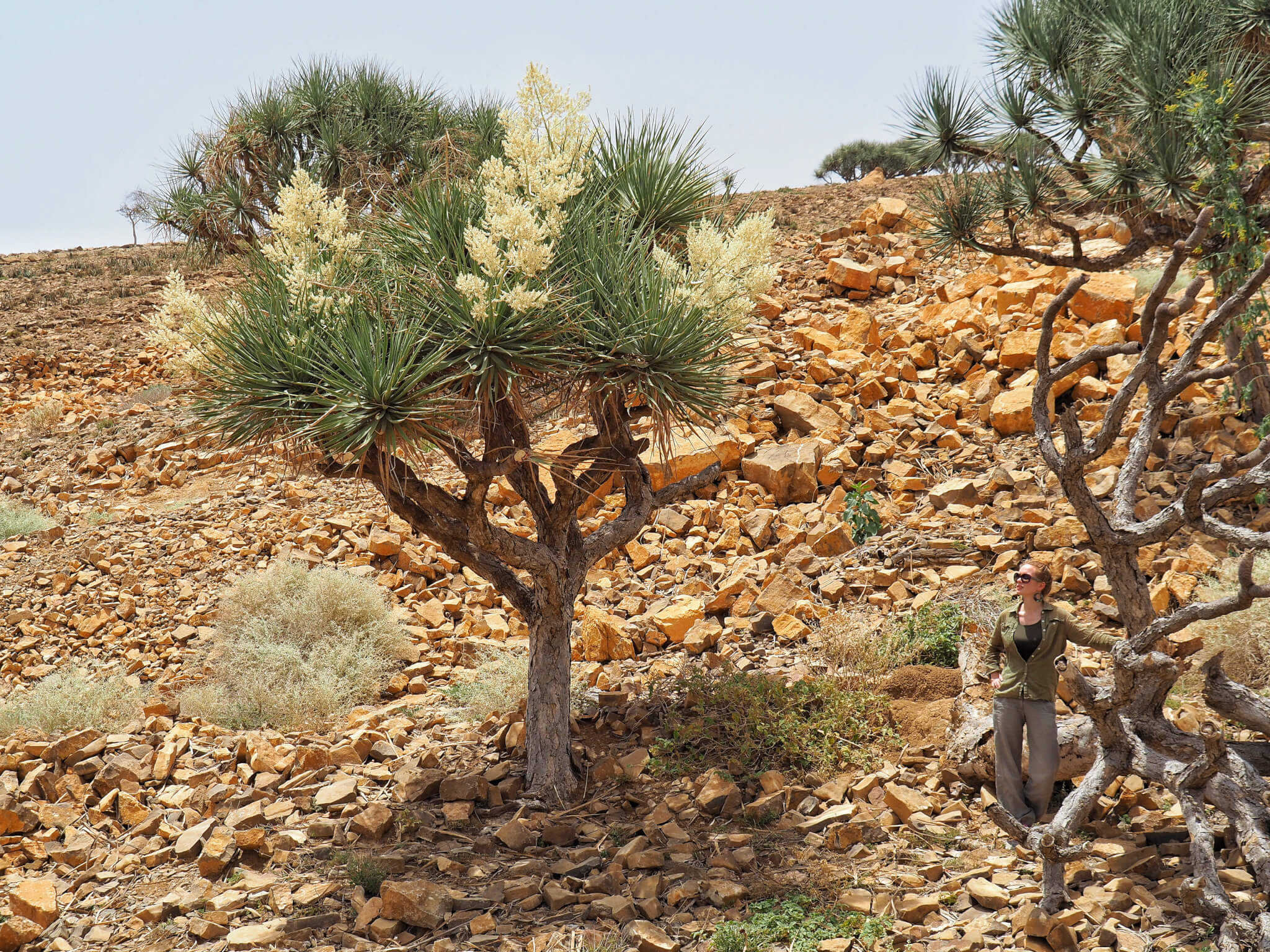



Leave A Comment